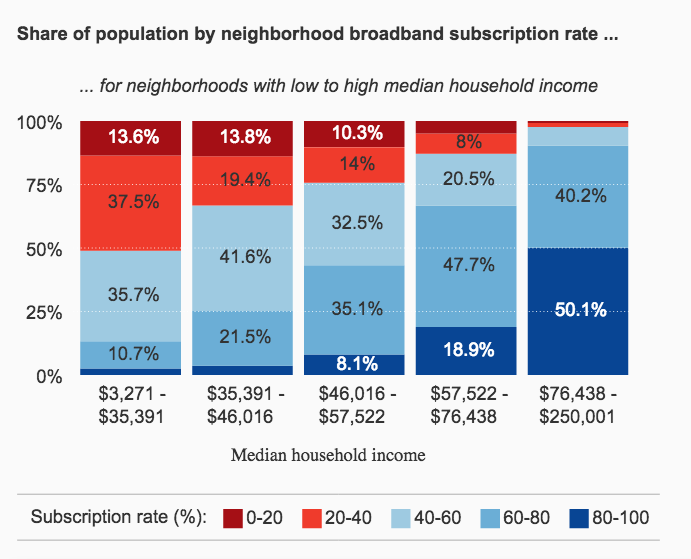As the internet has become more integral to the US economy and our lives, it is important that we are working not only to build computer or digital skills but also advocating for internet availability, especially in poorer neighborhoods.

The Brookings Institute has put together excellent analysis and a really nifty digital interface that can show both the availability of ‘broadband’ or internet access as well as the subscription rate in different urban areas. The Brookings analysis shows, for instance, that in Jackson, MS, over 15% of the population has no access to internet and in Birmingham, AL, about 10% of the population has no access.

Even access does not mean that most people buy or subscribe to broadband. Subscription rates could be low either because households cannot afford subscription or do not have the digital literacy or capability. In Greensboro-High Point, NC for instance 23% of the population lives in areas with very poor subscription rates. The interactive maps show details down to census tract levels.

This is very important for many reasons. Internet is very important for kids in school to help develop their digital capabilities and also enable them access to the internet for homework. Households can also potentially cut cable TV spending for entertainment and use digital streaming platforms with newer TVs. And increasingly, internet access is also important for access to various services, including training platforms as well as access to jobs.
This also underscores the importance of digital literacy in the communities that the National Fund serves. I feel that digital skills should be an essential part of any workforce development program to help prepare workers for the future.
By Navjeet Singh, Chief Learning Officer and Senior Vice President, National Fund for Workforce Solutions



